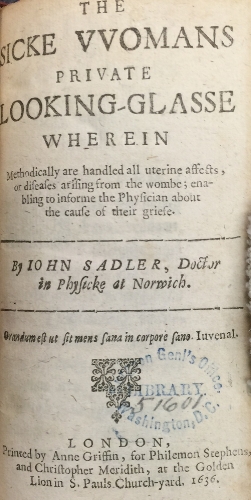Suetonius' Lives of the Twelve Caesars, 1506 woodcut.
Continuing the laws of inheritance, the Talmud rules that a fetus is not able to inherit from its mother until it is born. Then comes this technical question:
למימרא דהוא מיית ברישא והא הוה עובדא ופרכס תלתא פרכוסי אמר מר בר רב אשי מידי דהוה אזנב הלטאה שמפרכסת
Does this mean that [when a pregnant womean dies,] the fetus always dies first [i.e. before its mother]? But there was a case where a pregnant woman died and after that the fetus thrashed around three times? Mar bar Rav Ashi said: That movement of the fetus does not indicate that it was alive. It was rather like the severed tail of a lizard, which thrashes about."
According to Mar bar Rav Ashi, the movement of a fetus inside its dead mother is not an indication of independent life. Instead it demonstrates reflex movements. Here is one of those squirming detached lizard tails.
Mar bar Rav Ashi's explanation does not however, apply across all cases of the death of a pregnant woman. This is made clear by the Talmud in Arachin 7b:
Rabbi Nachman said in the name of Shmuel: A woman who sat on the birthstool and died on the Sabbath, we bring a knife and cut open her abdomen and remove the fetus.
This teaching clearly allows for the possibility that a fetus could survive the death of its mother. In fact the Talmud expands on the teaching of Mar bar Rav Ashi. The observation that in cases of maternal death the fetus dies first seems to only be true in cases in which there is a "natural death." However, in cases in which a pregnant woman was executed, it is the mother who dies first, followed by the demise of the fetus:
הני מילי לגבי מיתה איידי דוולד זוטרא חיותיה עיילא טיפה דמלאך המות ומחתך להו לסימנין אבל נהרגה היא מתה ברישא
This applies only to [her natural] death, because the child's life is very frail, the ‘drop’ [of poison] from the angel of death enters and destroys its vital organs, but in the case of death by execution she dies first.
Gruesome as this discussion is, the Talmud is likely correct. "Natural" maternal deaths that occur are likely from causes that will inevitably have led to the prior death of the fetus, like massive hemorrhage or sepsis. In the case of execution, the sudden death of the mother would occur before that of the fetus. Thankfully, the execution of pregnant women no-longer occurs in our society, but a similar outcome can occur when the mother is a victim of severe traumatic injury. We will return to this when we study Arachin in the Daf Yomi cycle.
Maternal Death Rates
“Between 2000 and 2020, eight countries recorded substantial increases in MMRs: Venezuela (182·8%), Cyprus (107%), Greece (101·1%), the USA (77·9%),
Mauritius (62·1%), Puerto Rico (55·9%), Belize (51·3%), and the Dominican Republic (36·0%;)”
The Commonwealth Fund. Maternal Mortality and Maternity Care in the United States Compared to 10 Other Developed Countries. November 2020.
Maternal deaths are defined as by the World Health Organization as the death of a woman whilst pregnant or within 42 days of delivery or termination of pregnancy, from any cause related to, or aggravated by pregnancy or its management, but excluding deaths from incidental or accidental causes. Worldwide, there are at least 287,000 such deaths each year. A recent study of maternal deaths in 115 countries noted that there are three main causes: Bleeding, high blood pressure (leading to complications like eclampsia) and infection. Here in the US, maternal deaths are among the highest in the developed world. Each year, 700-900 women die from pregnancy or childbirth-related causes, or about 17 per 100,000 live births. By comparison, the rate in Israel is fewer than 3 deaths per 100,000 live births - the third lowest of all OECD countries.
Maternal mortality rate estimates for the period 2010–20 Figures created with data from the UNICEF Data Warehouse.2 (A) MMR estimates for Brazil and the eight countries and territories that recorded substantial increases in MMR between 2000 and 2020. (B) MMR estimates for the three countries (all in sub-Saharan Africa) where MMRs in 2020 surpassed 1000 maternal deaths per 100000 livebirths. (C) MMR estimates for the three countries that recorded over 10000 maternal deaths each in 2020. MMR=maternal mortality ratio. From Khalil, Asma et al. A call to action: the global failure to effectively tackle maternal mortality rates. The Lancet Global Health 2023: 11(8), e1165 - e1167
Tragic as each of these deaths are, it was once a lot worse, and in the nineteenth century doctors played a major role in causing maternal deaths. In Vienna, Dr. Ignaz Semmelweiss (d. 1865) noted that the death rates in one maternity ward were three or four times higher than in a second ward. He suggested, after much sleuthing, that the cause was the dirty hands of medical students. These students came straight from performing autopsies to examining their pregnant and post-partum patients, with no hand washing in between. In an era before the germ theory of disease, his suggestion that something was carried on the hands of the medical students was widely ignored, but he instituted compulsory hand-washing anyway. And within a year the death rate dropped to zero.
Over the past century the maternal death rate in the US has declined by over 99%, although there are still significant racial and economic disparities. Passages such as the one we read in today's Daf Yomi remind us that for centuries, giving birth was a dangerous experience.












